Language Modeling
Language Modeling: task of predicting what words come next.
-
i.e.compute the conditional probability distribution

-
a language model can also be viewed as a system to give probability to a piece of text.

n-gram Language Models
n-gram Language Model: pre-deep learning solution for language modelling.
idea: Collect statistics on frequency of n-grams, and use these to predict next word
(assumption: current word only dep on previous n-1 words)



sparsity problem:
- some ngrams never appear in training data
- partial solution: smoothing, i.e. add small delta to all words in Vocab
- or the context n-1 gram is never in training data
- partial solution: back-off, i.e. just condition on the n-2 gram
- storage problem: need to store counts for all ngrams
language model to generate text:
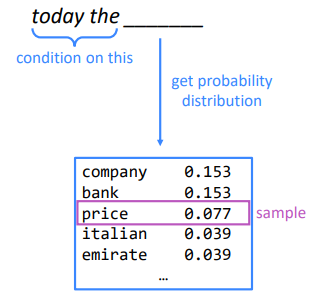
Neural Language Models
window-based neural model: use a fixed window

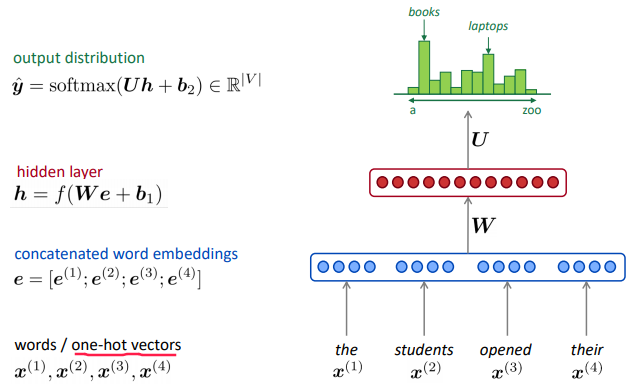
⇒ compared to ngram model:
- no sparsity problem
- no storage problem
remaining problems:
- window too small
- words at different positions use different weights, no symmetry
⇒ need a NN model that can process any length input
RNN Overview
A new family of NN:
- hidden state = function of prev hidden state and curr input vector
- apply the same weights
Wrepeatedly.
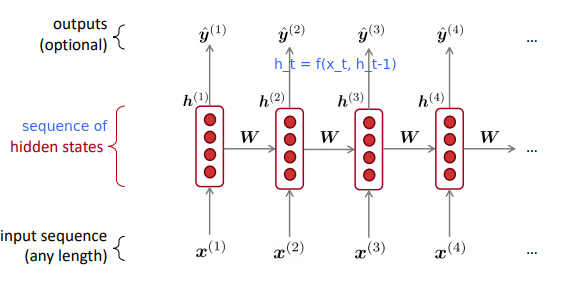
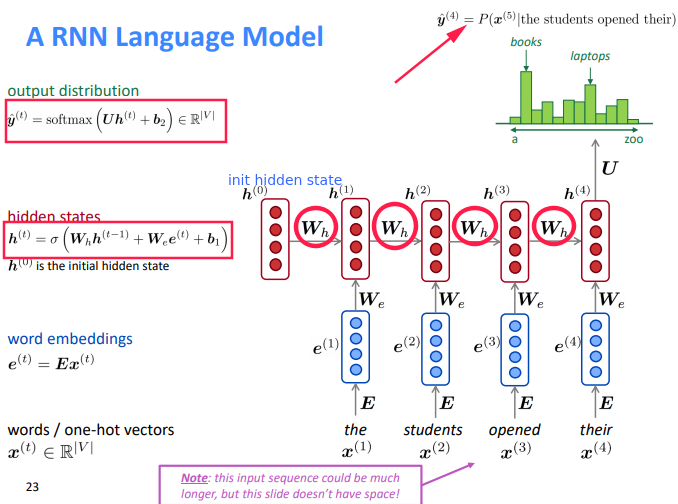
RNN Advantages and Disadvantages
pros:
- any length input
- Computation for step
tcan (in theory) use information from many steps back - Model size doesn’t increase for longer input
- symmetry in how inputs are processed: apply the same weights Wh and We
cons:
- slow
- difficult to access information from many steps back in practice
Training RNN Models
- get text corpus
- feed text to RNN language model, compute
y_tfor every stept. - loss function: cross entropy

- averaged for all steps t:

in practice: compute t for entire corpus is too expensive
⇒ only compute for a sentence or a document
SGD: only compute loss for a batch of sentences
backprop
pb: the weights W is repeatedly applied, how to compute the grad?
⇒

Multivariable Chain Rule:
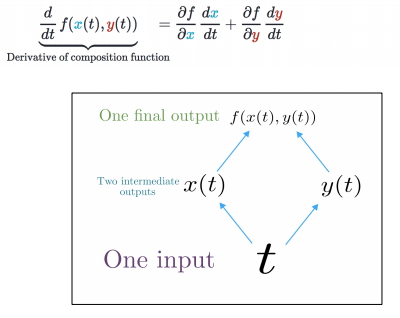
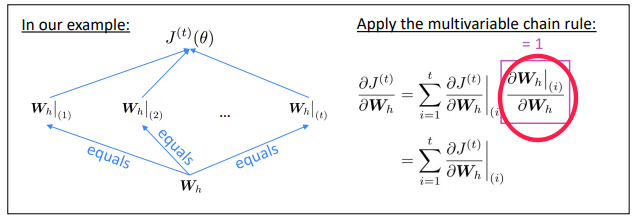
backprop through time

RNN Text Generation
use the RNN LM to gen text: sampled output is next step’s input.
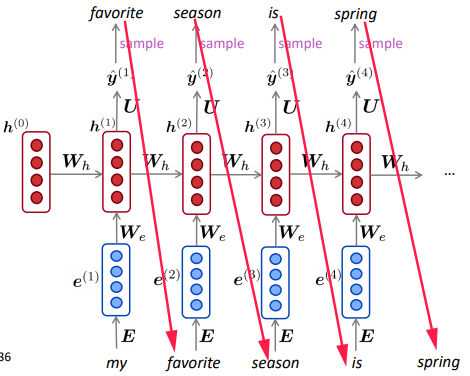
Evaluating Language Models
Perplexity: standard eval metrics of language models.

Perplexity equals exp(J(theta)) where J is cross-entropy loss ⇒ the smaller the better

Why should we care about Language Modeling?
- LM is a benchmark task that helps us measure our progress on understanding language
- LM is a subcomponent of many NLP tasks
Recap
- Language model: system that predicts the next word
- Recurrent Neural Network:
- seq input of any length
- same weight on each step
- optionally produce output on each step
RNN can be used for LM, but can be used for other taskes.
- RNN for POS tagging:
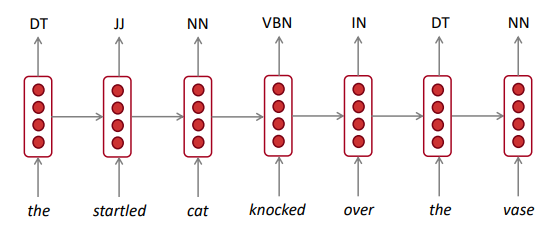
- RNN for sentiment classification:
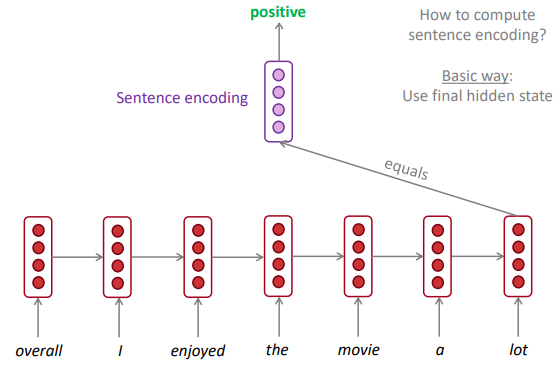
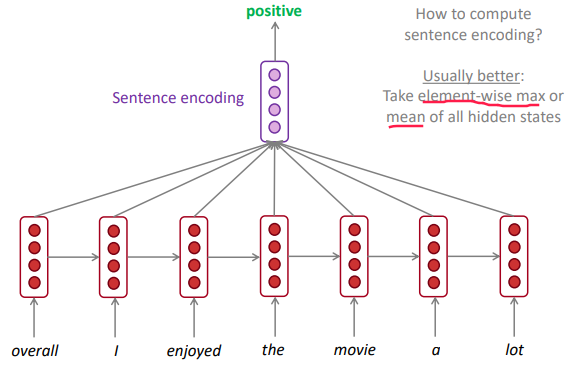
- RNN as an encoder module: e.g.question answering, machine translation, etc.
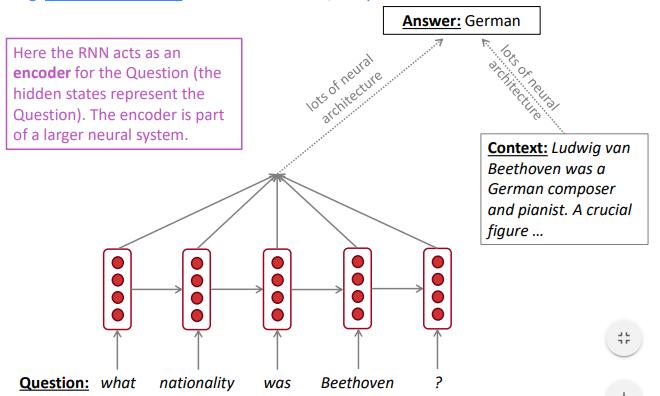
- RNN used to gen text: e.g.speech recognition, machine translation, summarization
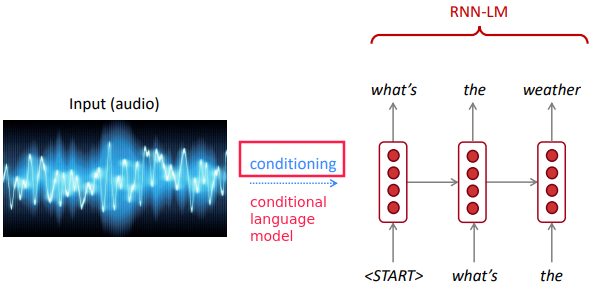
terminology: vanilla RNN, GRU, LSTM, etc.
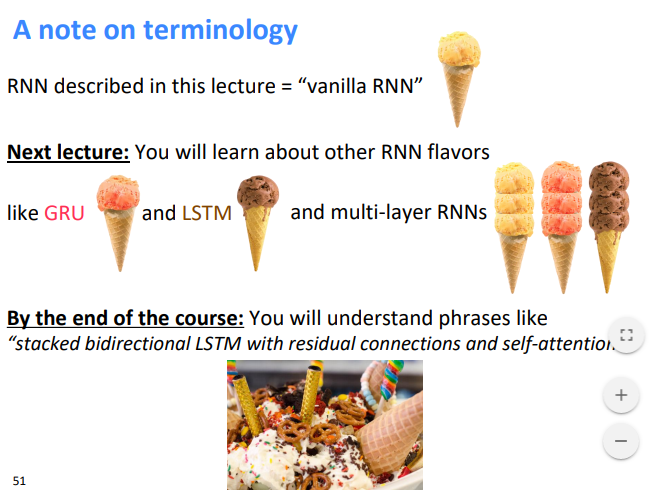
Part 6 of series «XCS224N: NLP with deep learning»:
- [XCS224N] Lecture 1 – Introduction and Word Vectors
- [XCS224N] Lecture 2 – Word Vectors and Word Senses
- [XCS224N] Lecture 3 – Neural Networks
- [XCS224N] Lecture 4 – Backpropagation
- [XCS224N] Lecture 5 – Dependency Parsing
- [XCS224N] Lecture 6 – Language Models and RNNs
- [XCS224N] Lecture 7 – Vanishing Gradients and Fancy RNNs
- [XCS224N] Lecture 8 – Translation, Seq2Seq, Attention
Disqus 留言